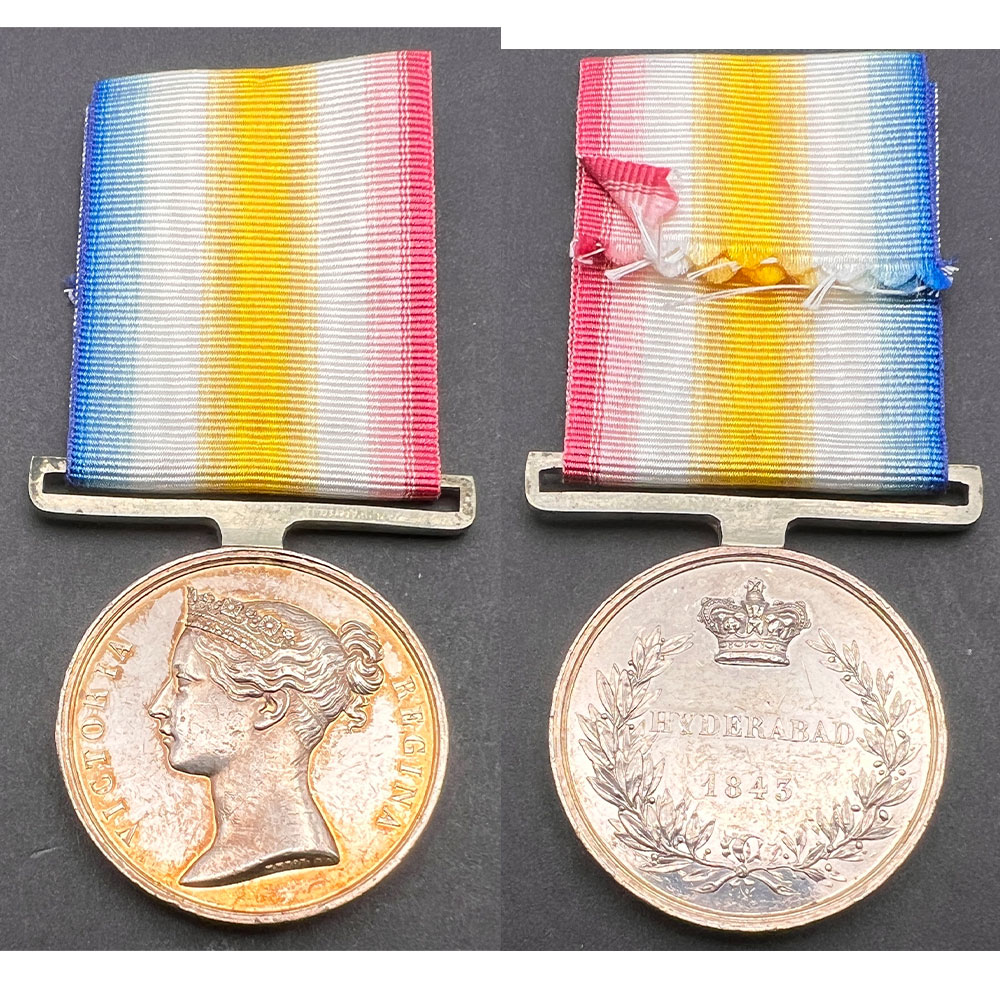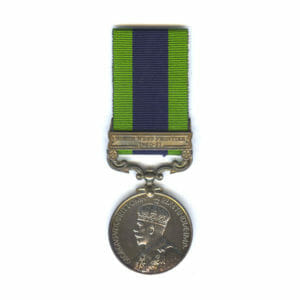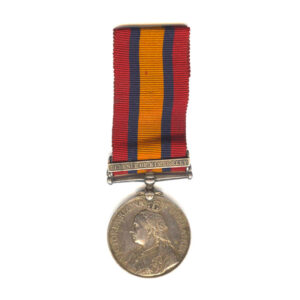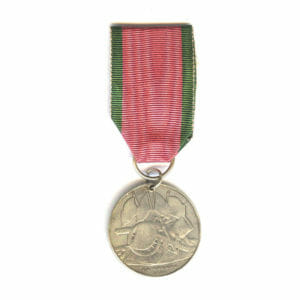Description
Scinde War Medal 1843, Hyderabad reverse, Sew Deen Oopadia, 21st Regiment of Native Infantry.
Officially impressed in usual Indian Army style: “Sew Deen Oopadia 21st REGt N.I.”
A good condition example for this issue, some light contact marking.
Provenance, ex DNW 19th April 1995
Fitted with China 1842 style “German Silver” bar suspender as seen on the majority of medals issued to Indian recipients.
During the war, the 1st Battalion 21st Native Infantry were present in the “Hyderabad Brigade” under command of Colonel Sir Augustus Floyer KCB:
It consisted of:
1st Battalion 22nd N.I.
1st Battalion 21st N.I.
5 Companies, Madras European Regiment
Detail of Artillery
1st Battalion 8 N.I.
An account of the Battle fought at Hyderabad on 24th March 1843:
“On 24 March 1843 British troops, led by Sir Charles Napier, set out from Hyderabad to meet Sher Mohammad. After marching for some time, the British forces came upon the Amir’s army. While waiting for the rest of the British army, the Scinde Horse, one of Napier’s cavalry regiments, began to position themselves in a line opposite the Talpur’s troops, who began to fire on the regiment. Napier himself had to do much of the positioning of the troops, as he lacked experienced commanders within his regiments. As each regiment made its way to the battle, and into position, the fighting grew fierce between both sides. The Talpur troops were well entrenched in their position and, due to the terrain, Napier was unable to get an idea of just how far the Talpur line was and how well it was supported. Soon the British had brought up artillery as well, which opened fire on the Talpur troops in their trenches. As the British approached the left side of Talpur forces, they found themselves faced with heavy attack from the trees, where a large number of troops had positioned themselves.
After almost an hour of fire between both sides, Napier began to see an opportunity to break through a weak spot in the Amir’s lines. The Scinde Horse and 3rd Bombay Light Cavalry made a move to attack with the left wing of the British troops and crashed into the Talpur before they could do significant damage. Meanwhile, on the right wing British soldiers charged the Talpur lines, piling over their trenches where the tightly packed Talpurs found difficulty in using their swords against the British. Seeing the desperation of the Talpur plight Amir Sher Mohammad left the battle at the suggestion of his commander, Hosh Mohammad Kambrani (also called Hosh Muhammad Shidi), with hopes that he might obtain another chance at victory over the British. Hosh Muhammad, on the other hand, stayed behind with the troops, fighting the British to the death.
The British troops, seeing the center of the Talpur line giving way, charged through the middle, dividing the Amir’s line. About this time, Napier was almost killed when a magazine exploded nearby, killing some British soldiers near him, but sparing his life. One of Napier’s commanders, after breaking through the Talpur’s left wing then left the field, perhaps aiding later in cutting off the Talpur’s retreat. The Amir’s men, routed and disorganized, began to flee, and Napier with the Bengal Cavalry pressed on after them, cutting them off from escaping across the Indus. This strategic move on the part of the British stopped the Talpurs from regrouping with others and posing a threat to the British. With the Talpurs dispersed, Napier returned to his men who celebrated their victor with three cheers. This battle would be one of the last major efforts by Sher Mohammad to resist against the British, which ended on 14 June when British troops surprised the Amir and captured three of his cannons. Sher Mohammad himself escaped to Afghanistan.”




